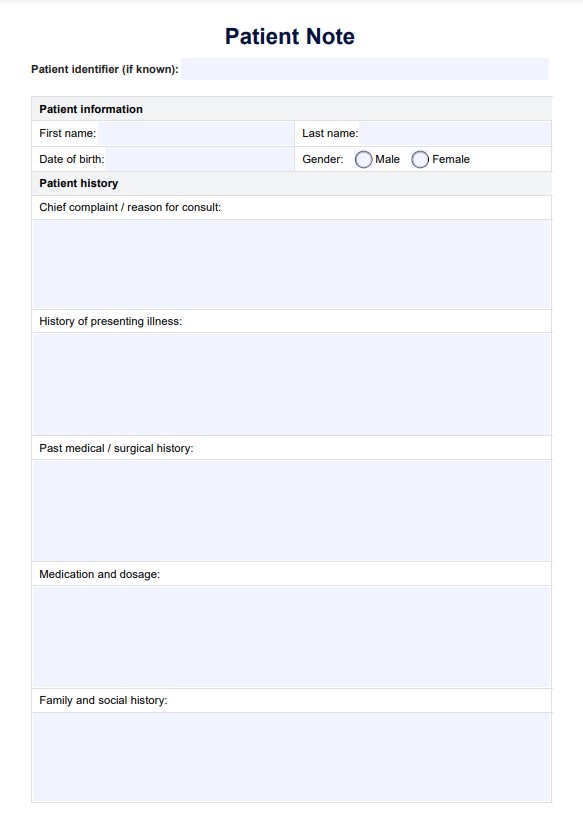Writing effective patient notes requires clarity and precision. They must be concise yet comprehensive, documenting all relevant subjective and objective information such as clinical findings, decisions made, treatment plans, and care provided. Include only pertinent information to ensure any healthcare provider can understand and follow up on the case without ambiguity.

Patient Note Template
Discover our Patient Note Template suitable for all healthcare professionals, designed to streamline clinical documentation and enhance care delivery.
Patient Note Template Template
Commonly asked questions
Patient notes typically include identifiers, medical history, clinical findings, diagnostic test results, and possible follow-up appointments and care. They should also record any medications prescribed, patient responses, and changes in their patient's condition to provide a comprehensive account of the interaction.
Maintaining patient notes is a standard practice for health professionals across all healthcare disciplines. These notes form a crucial part of the medical record, aiding in continuity of care, facilitating communication among care providers, and serving as a legal document in compliance with medical regulations. That's why healthcare providers usually undergo training such as SOAP note writing to ensure they are always ready.
EHR and practice management software
Get started for free
*No credit card required
Free
$0/usd
Unlimited clients
Telehealth
1GB of storage
Client portal text
Automated billing and online payments











